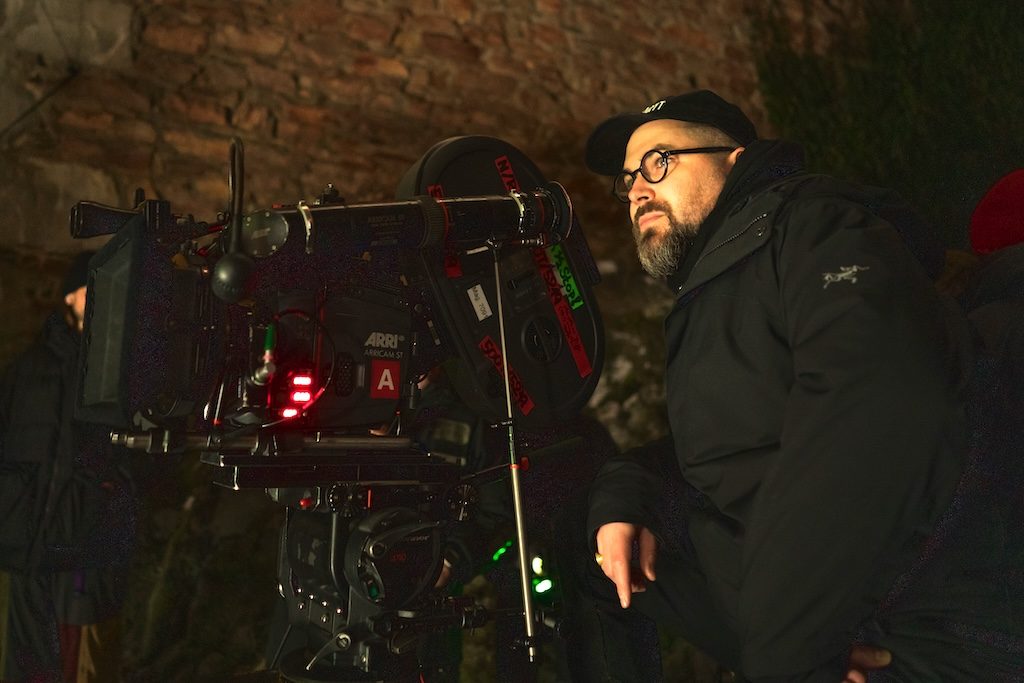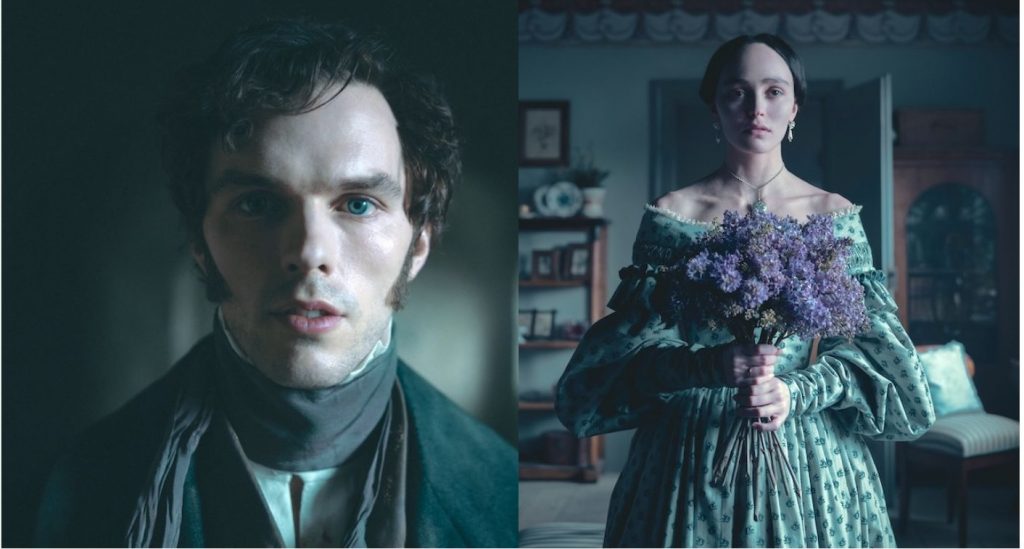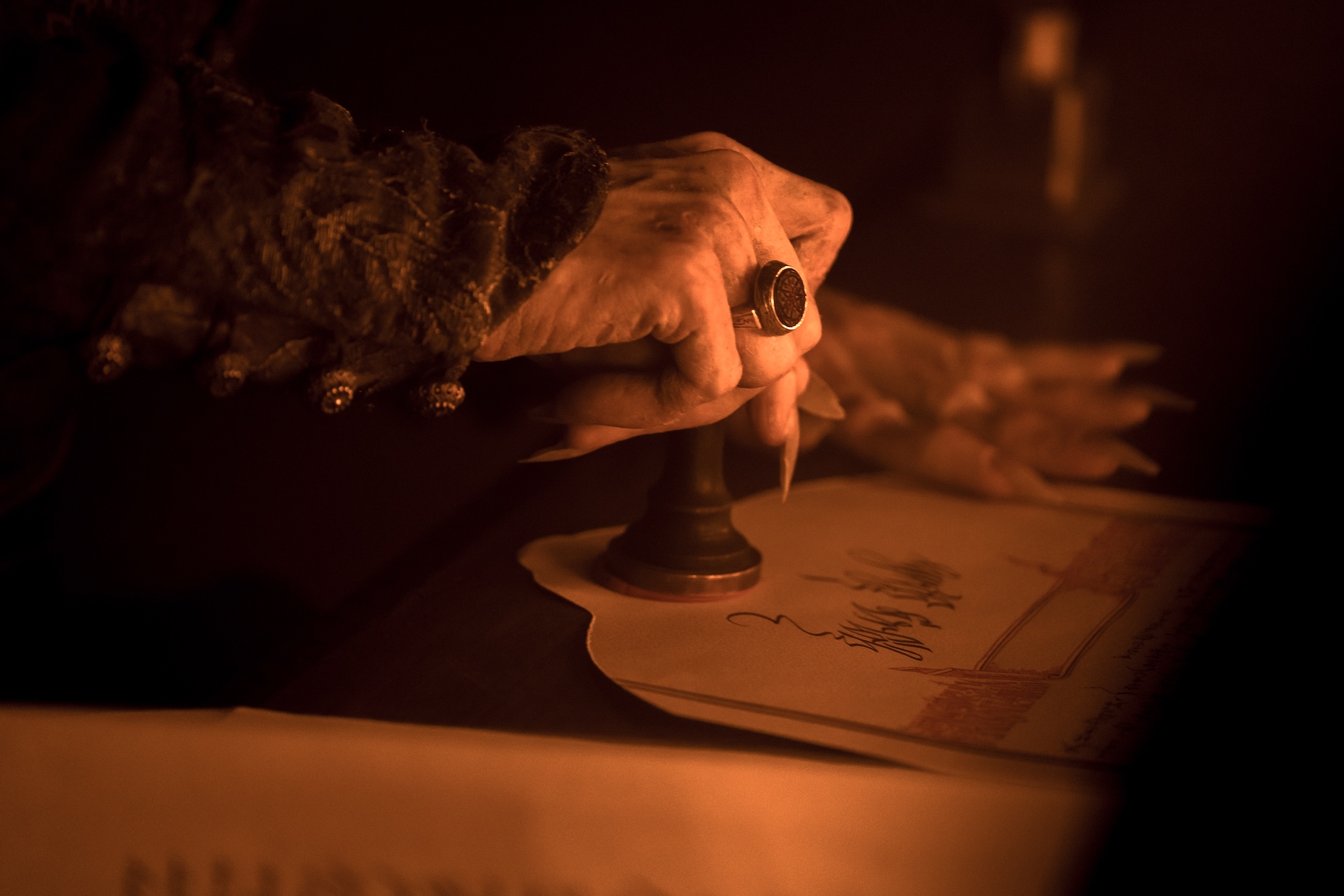Now, Robert Eggers (The Northman, The Lighthouse) has put his stamp on the iconic horror starring Bill Skarsgård as Count Orlok, and Nicholas Hoult and Lily-Rose Depp as Thomas and Ellen Hutter respectively. Eggers wrestled with it for years trying to figure out how to refresh the story.
Not one to be influenced by the modern day gorefest and slashfest that appears in many recent horror films, Eggers dug deeper into the dark mythology of the vampire to make Nosferatu. In modern day Romania, home of the vampire folklore, there are stories of locals who exhumed the body of a man they believed was a vampire, who allegedly attacked them during the night, and ritualistically mutilated his deemed demonic body. After the body was decimated, the attacks supposedly stopped.

Robert Eggers. Photo by Aidan Monaghan
A Modern Take On A Classic Story
“The folk vampire is not a suave dinner-coat-wearing seducer, nor a sparkling, brooding hero. The folk vampire embodies disease, death, and sex in a brutal and unforgiving way. This is the vampire I wanted to exhume for a modern audience,” comments Robert Eggers.
The concept of a romance between the dead and undead is not new in cinema. In both versions of Nosferatu, Orlok is obsessed with Ellen who must decide between Thomas or him.
Many elements of the original Nosferatu remain in Eggers’ refreshed version. Thomas Hutter, a real estate agent, travels to Transylvania to meet with Count Orlok, who may potentially sell his mansion to him. It’s the perfect place to raise a family. His new bride Ellen is left behind in the care of their friends Friedrich and Anna Harding (Aaron Taylor-Johnson and Emma Corrin), a happily married couple. There, she experiences otherworldly hallucinations.
[More: Robert Eggers & Sjón on ‘The Northman’’]

Thomas Hutter (Nicholas Hault) & Lily-Rose Depp (Ellen Hutter) Photo by Adrian Monaghan
Eggers’ turned to the Henrik Galeen’s screenplay for Nosferatu which was based on Bram Stoker’s Dracula novel to stimulate his muse. He first adapted it into a stageplay which was well-received. It was followed by a screenplay which gathered dust for years. After the filmmaker’s supernatural horror film Witch screened at Sundance in 2015 and his Viking drama The Northman which screened in Cannes in 2019, his focus returned to Nosferatu and a pathway to its retelling for the big screen.
Rather than simply redraft his earlier screenplay, Eggers expanded the ‘living beauty and dead beast’ untenable romance angle of Nosferatu into a novella. He created extensive new backstories for the characters and added scenes to better galvanize the story in his mind. He diligently undertook this mammoth task knowing full well that it would be unfilmable in a novella format.
Adding A New Focus
“ As an evolution of the story, the thing that is most significant is that this is Ellen’s film. She is a victim not only of the vampire, but of nineteenth century society,” says Eggers. He looked at Henrik Galeen’s screenplay yet again and conducted more research on the occult and how vampires were perceived at the time.
He took great joy in this painstaking research. “Part of it is about eliminating decisions; you don’t need to invent anything. you just look for it and find it.” He re-read Bram Stoker’s Dracula yet again to augment his vision for Nosferatu.
Nosferatu deliberately avoids the jump scares and excessive bloodletting of many modern horror films. Instead, he plays it as a deep character piece – a twisted love triangle of sorts. It’s grounded and real. The emotions are visceral and human. This aspect is highlighted in Ellen’s nightmarish visions which eventually draw her to Count Orlok. The otherworldy elements simply garnish the love story rather than eclipse it with ghoulish monsters as Ellen traverses the realms of both the living and the dead in this tragedy.
